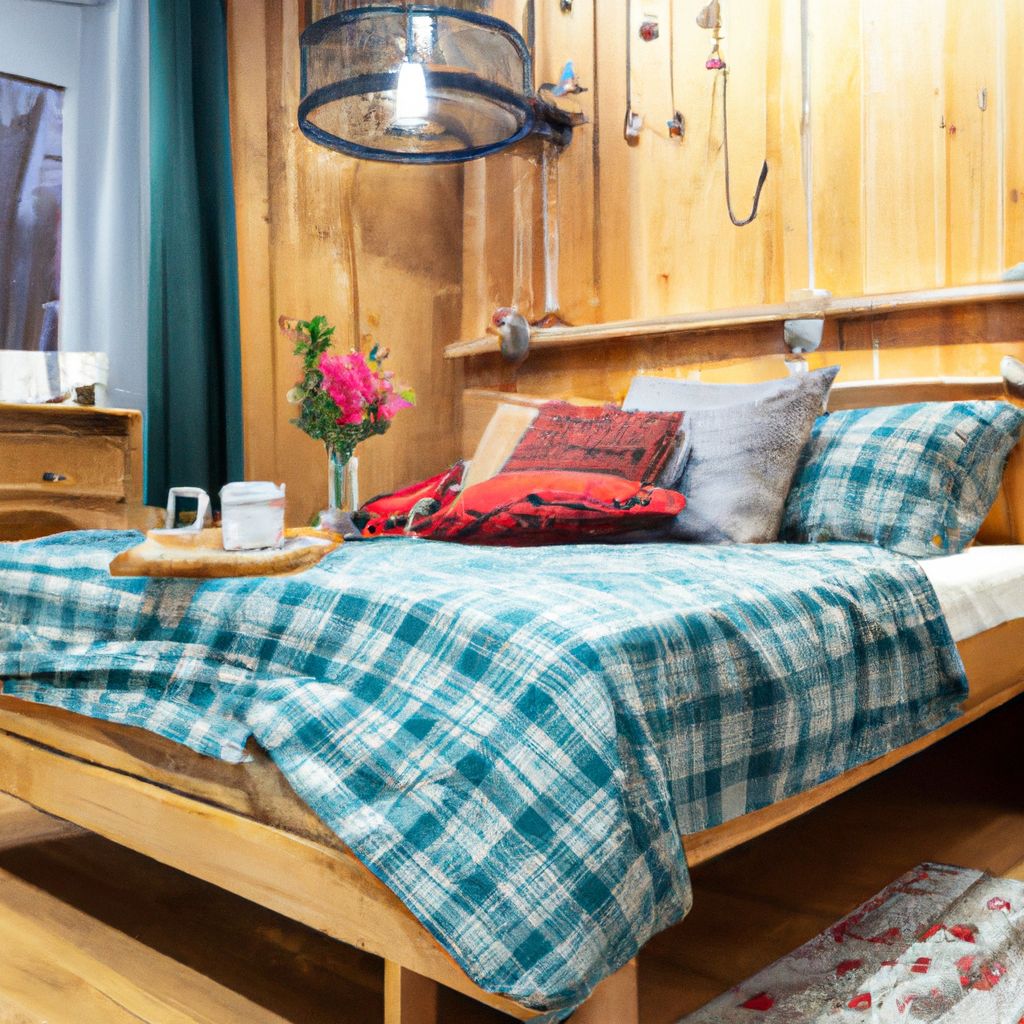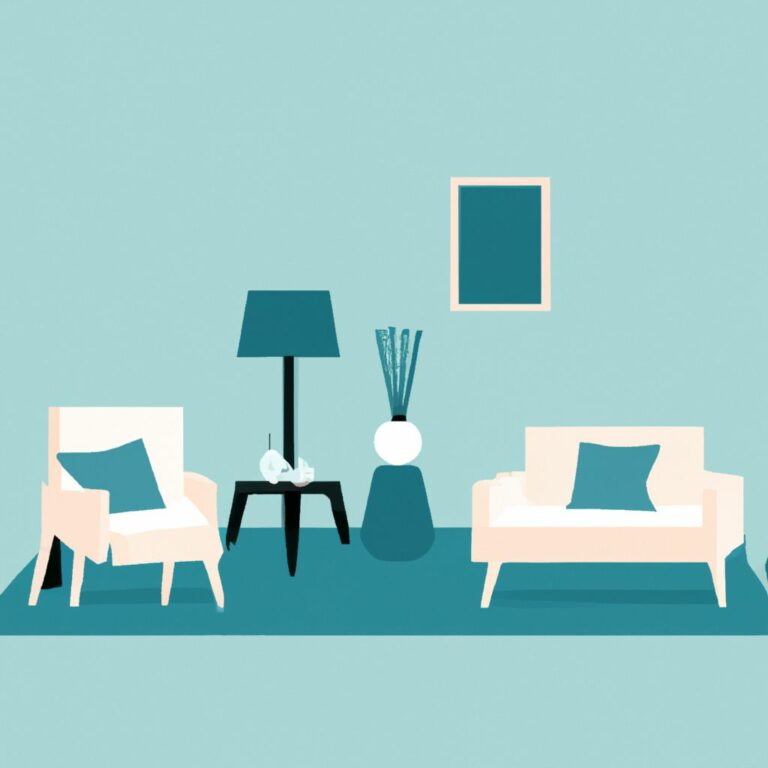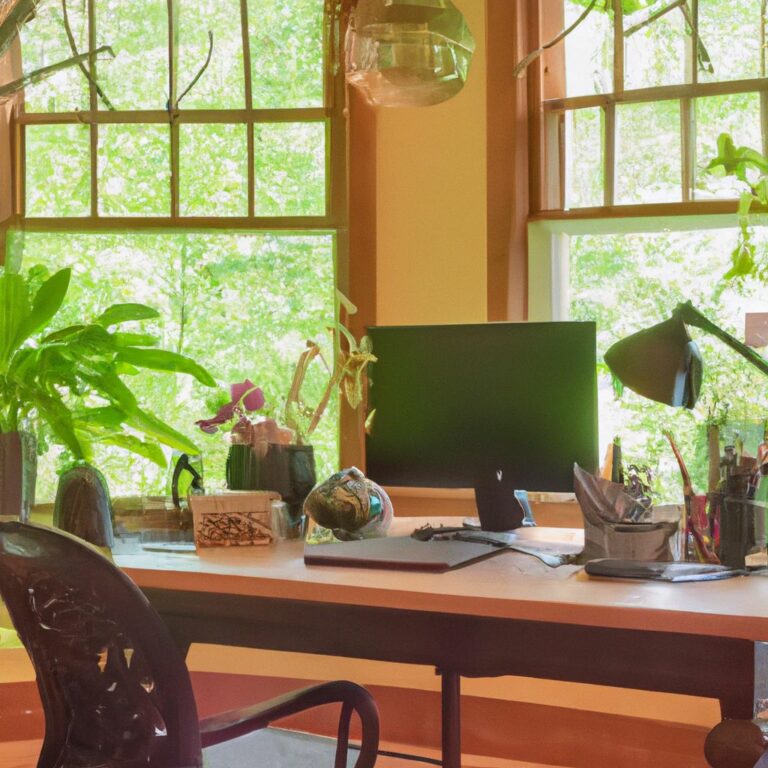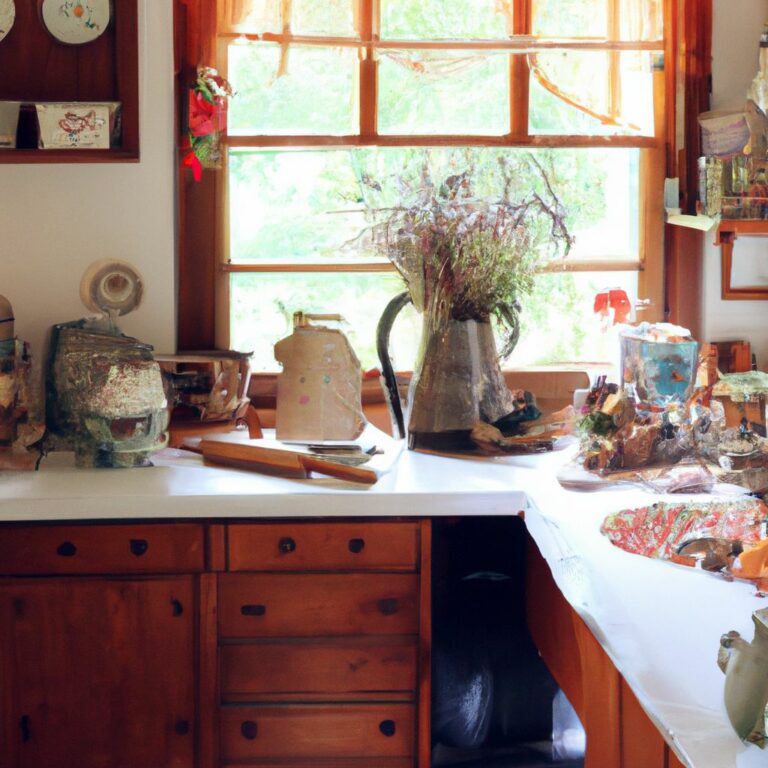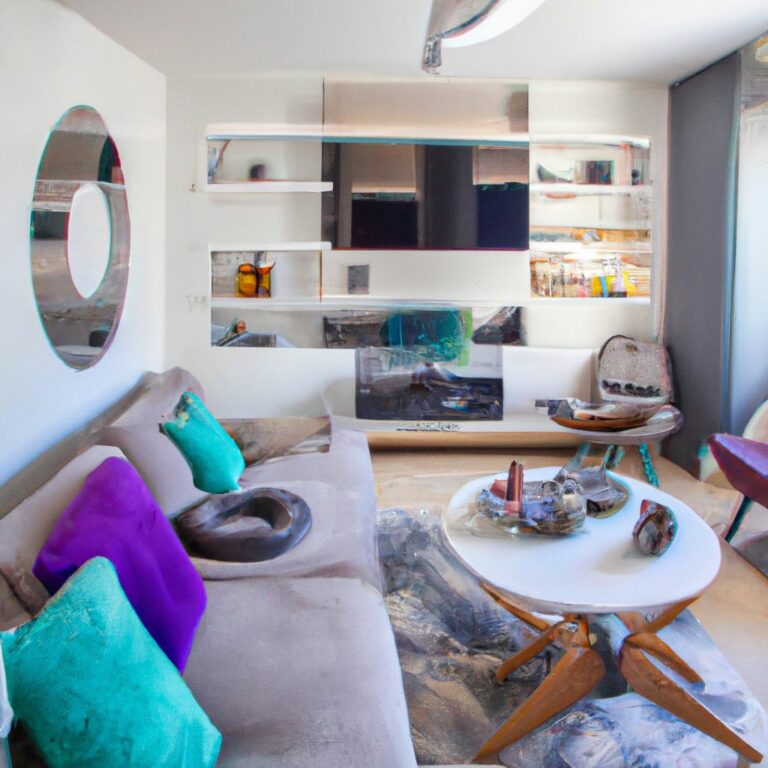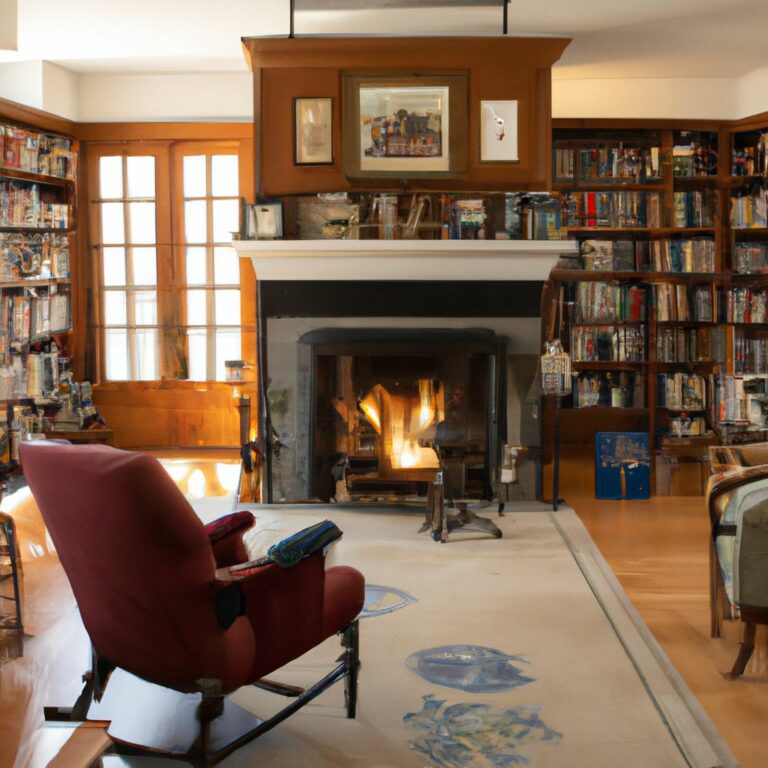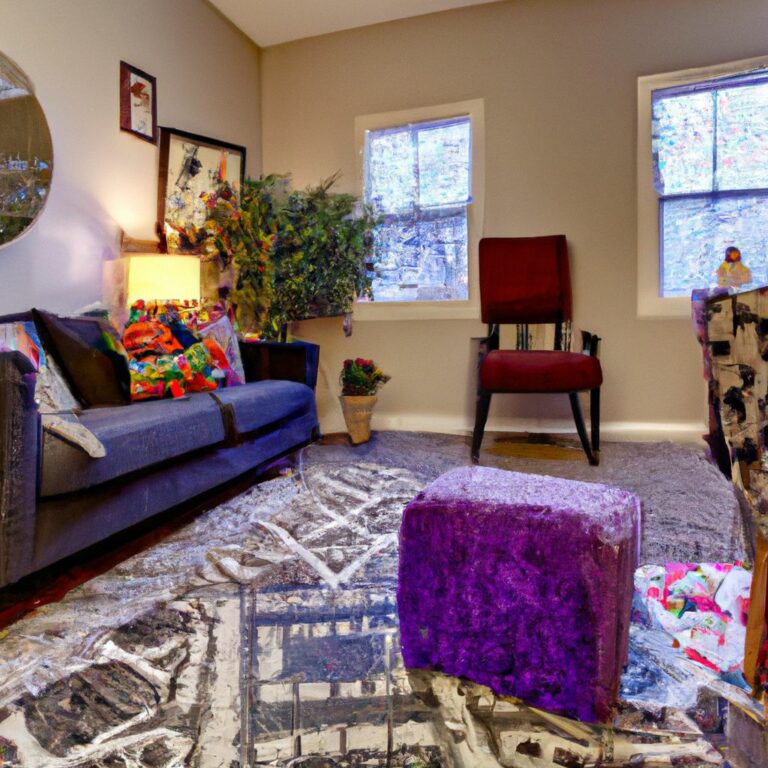Introduction: Maximizing Space in Studio Apartments
Maximize studio apartment space through strategic planning and creative solutions. Utilize multifunctional furniture and smart storage options to optimize every inch. Incorporate light colors and mirrors for an illusion of spaciousness. Divide the area into zones to enhance functionality and visual appeal. Remember to declutter regularly to maintain a clutter-free environment.
Pro Tip: Maximize vertical space with wall-mounted shelves or overhead racks. No need for personal space – rearrange furniture for a constant game of human Tetris!
Efficient Furniture Arrangement
Efficient Furniture Arrangement: Optimizing Space in Studio Apartments
Are you struggling to arrange your furniture in a small studio apartment? Don’t worry, we’ve got you covered! Efficient furniture arrangement can make a huge difference in optimizing the limited space available. Here’s a 5-step guide to help you make the most of your studio apartment:
- Consider the focal point: Start by identifying the focal point of your apartment, such as a large window or a stunning view. Arrange your furniture around this focal point to create a visually appealing and functional space.
- Use multipurpose furniture: Invest in furniture pieces that serve multiple functions. For example, a sofa bed can be used for seating during the day and transformed into a bed at night. This way, you can save valuable space without compromising on comfort.
- Embrace vertical storage: Make use of vertical wall space by installing shelves, cabinets, or hanging organizers. This will help you maximize storage without cluttering the floor area. Utilize every available nook and cranny to keep your belongings organized and easily accessible.
- Create distinct zones: Define different areas within your studio apartment by using furniture and rugs to create visual separations. For instance, you can use a bookshelf or a folding screen to separate the living area from the sleeping space. This will give your apartment a sense of structure and functionality.
- Maintain a clutter-free environment: Keep your studio apartment clutter-free by regularly decluttering and organizing your belongings. Opt for furniture with built-in storage compartments to hide away items that are not in use. A clean and tidy space will make your apartment feel more spacious and inviting.
In addition to these steps, remember to choose furniture that is proportionate to the size of your apartment. Avoid oversized furniture that can overwhelm the space. By following these tips, you can create an efficient furniture arrangement that maximizes the potential of your studio apartment.
Looking for a more personalized touch? Consult an interior designer for tailored solutions that suit your specific needs and style preferences.
Who needs a bed when you can sleep on a stack of chairs, a fold-out couch, and a pile of throw pillows? Studio apartments are all about embracing your inner contortionist.
Utilizing multi-functional furniture pieces
Take a look at the following table. It reveals the true potential of multi-functional furniture.
| Furniture Piece | Functionality |
|---|---|
| Sofa bed | Seating by day, bed by night |
| Storage ottoman | Stylish seat and hidden storage |
| Foldable dining table | Compact dining surface |
| Bookshelf with built-in desk | Display books and provide workspace |
These pieces of furniture offer flexibility and convenience. They can do multiple jobs, making them perfect for small apartments or rooms with limited area.
Multi-functional furniture has its roots in ancient civilizations such as Egypt and Rome. People used clever design solutions to make the most out of limited living spaces. It’s amazing to see how this concept has evolved over the centuries to suit our changing needs.
Want to hide mess? Just stuff it in a cabinet and hope it won’t revolt!
Creative Storage Solutions
Creative Storage Solutions for Studio Apartments
Efficient storage solutions for compact living spaces.
- Utilize vertical space: Install wall-mounted shelves and hooks to maximize storage space in a studio apartment.
- Choose multi-functional furniture: Opt for storage ottomans, beds with built-in drawers, or floating shelves that serve dual purposes.
- Divide and conquer: Use room dividers or curtains to create separate storage zones and visually organize the space.
- Utilize under-bed space: Invest in bed risers or storage containers to make the most of the often neglected area under the bed.
To enhance the functionality and aesthetics, these storage solutions provide practicality and style to studio apartments. By exploring innovative options for storage, you can optimize the limited space in your studio apartment effectively.
Sharing a True History: Creative storage solutions have long been utilized in compact living situations. From the ingenious built-in shelves in ancient Roman studios to the clever use of loft beds in Japanese micro-apartments, people have found innovative ways to make the most of limited space throughout history.
Make your walls work as hard as your ex’s publicist with these vertical storage options.
Vertical storage options
Vertical storage is the way to go! Shelving units provide open space for books, bins, and more. Wall-mounted cabinets offer both open and closed storage. Hanging organizers are great for jewelry and accessories.
Pegboards are a unique option – customize the layout with hooks and shelves. Or repurpose ladders to make a rustic-chic storage system. Get creative with materials and finishes to match your decor.
Vertical storage saves floor space and adds visual interest to walls. So get creative and spruce up your storage solutions!
Choosing a Color Palette
Choosing the Right Color Scheme for Your Studio Apartment
When it comes to choosing a color palette for your studio apartment, there are a few key factors to consider. Here are four points to keep in mind:
- Harmonizing Colors: Select colors that blend well together and create a cohesive look. Pay attention to the undertones of each color to ensure they work harmoniously.
- The Power of Neutrals: Neutral shades like whites, grays, and beiges can make a small space feel open and airy. They also offer a versatile backdrop that allows you to easily incorporate pops of color through accent pieces.
- Reflecting Light: Lighter colors have the ability to reflect more light, which can make your studio apartment appear larger and brighter. Consider using light shades for walls, furniture, and curtains.
- Visual Interest: Don’t be afraid to experiment with different shades and hues to add depth and visual interest to your space. Incorporate a mix of bold and muted colors to create a balanced and dynamic atmosphere.
When choosing a color palette for your studio apartment, remember to consider the unique details of your space, such as the amount of natural light and the size of the room. By selecting the right colors, you can create a visually appealing and harmonious environment that reflects your personal style.
True Story:
A friend of mine recently moved into a small studio apartment with limited natural light. She decided to paint the walls a light shade of lavender to brighten up the space. To add contrast and depth, she incorporated touches of metallic gold and deep plum in her choice of furnishings and accessories. The result was a cozy yet sophisticated atmosphere that made the room feel larger and more inviting.
Who needs an actual window when you can just paint one on the wall and pretend you have a view beyond the brick wall of your studio apartment?
Using light colors to create the illusion of space
Light colors like whites, creams, or pastels can help create a spacious feel. Furniture and accessories in light tones add to the effect. Lighter flooring also contributes. Place mirrors to reflect light and give the impression of more room. Sheer curtains let natural light filter in, brightening the room. Accents like pillows or artwork can add color without sacrificing space.
Light colors bring serenity and relaxation. But, don’t overdo it; too much light may make the room cold or sterile. Mix in some contrasting elements to keep warmth and personality. Mirrors can be magical for making a room appear bigger!
Mirror Magic: Enhancing the Perception of Space
Mirrors can transform a small studio apartment into a vast oasis. With light reflection and the illusion of space, they make the room look larger than it is. Let’s discover some creative uses of mirror decor in the home!
Large mirrors are a visual expander, making the room seem more open and airy. Place them across from windows to let natural light bounce off and light up the space. This brightens up your studio and creates a cozy atmosphere.
Hang them on walls or doors facing each other for an infinity effect. This adds depth and dimension to your living area. For extra impact, try mirrored furniture like coffee tables or cabinets.
Unlock the potential of your living space with mirror magic! Place a few mirrors in the right places and your cozy abode will feel like a grand palace. Bring out the best in your studio apartment and conceal that pesky carpet stain with strategic lighting.
Strategic Lighting
Strategically enhancing the lighting in your studio apartment can create a visually appealing and functional space. Lighting placement and selection play a crucial role in maximizing space and creating different moods with the right ambiance. Implementing smart lighting solutions can help define different functional areas and highlight specific features, making your studio apartment feel larger and more inviting.
- Lighting Placement
- Lighting Selection
- Creating Different Moods
- Maximizing Space
- Highlighting Features
To effectively implement strategic lighting in your studio apartment, consider the placement of lights in each area. Use task lighting for specific work areas such as the kitchen or study nook. Ambient lighting can be used to create a warm and cozy ambiance, while accent lighting can highlight artwork or architectural features. By strategically placing lights at different heights and angles, you can visually separate different areas within your studio apartment.
Choosing the right lighting fixtures is also important. Opt for adjustable lights that can be easily maneuvered to suit your needs throughout the day. Use LED lights to save energy and create a bright, yet energy-efficient environment. Consider using dimmers to control the intensity of the lights and create different moods for different activities.
In addition to placement and selection, maximizing space through lighting is essential in a studio apartment. By utilizing wall sconces or pendant lights instead of floor lamps, you can free up valuable floor space and create a more open atmosphere. Mirrors and reflective surfaces can also be used strategically to bounce light around the room and make the space appear larger.
Make sure to highlight specific features in your studio apartment through well-placed lighting. Use spotlighting or track lighting to draw attention to artwork, decorative pieces, or architectural details. By highlighting these features, you can create focal points and add visual interest to your living space.
Don’t miss out on the opportunity to transform your studio apartment into a well-lit and inviting sanctuary. With strategic lighting, you can create a space that is not only visually appealing but also enhances functionality. Embrace the power of lighting and make your studio apartment a place you enjoy coming home to.
Incorporating different types of lighting fixtures is like having a disco in your studio apartment, minus the awkward dancing and regrettable fashion choices.
Incorporating different types of lighting fixtures
Different lighting fixtures can be used to create an atmosphere. For instance, chandeliers make a statement over dining tables, while wall sconces offer accent lighting beside mirrors. LED strip lights can provide illumination in unexpected places.
When selecting fixtures for a space, consider the purpose of the area and choose styles that match the overall theme. Layering ambient, accent and task lighting can create a well-balanced atmosphere. Installing dimmer switches allows for versatile control.
Careful planning and attention to detail can create a unique atmosphere that complements the design. Strategic lighting can help find the perfect balance between light and darkness.
Creating Separate Zones
Creating Distinct Spaces:
Transforming a studio apartment into designated zones can maximize functionality and provide a sense of spaciousness. Follow these simple steps to create separate areas within your studio apartment:
- Utilize furniture placement: Strategically position furniture to delineate different zones. Place a sofa or bookshelf to create a living room area, a bed or screen for the bedroom, and a dining table for the eating area.
- Use room dividers: Incorporate decorative room dividers or curtains to visually separate distinct areas. This provides privacy while maintaining an open layout.
- Define zones with lighting: Employ different lighting techniques to establish separate zones. Use pendant lights or floor lamps to illuminate specific areas, such as the living room or reading nook.
- Add rugs and artwork: Enhance the sense of separation by using rugs or floor coverings to demarcate different zones. Hang artwork or decorative elements on walls to bring focus to individual spaces.
By following these steps, you can create distinct zones in your studio apartment that cater to different functions and make the space feel larger and more organized.
Importantly, designing separate zones in a studio apartment allows for improved functionality and a more aesthetically pleasing environment. With careful consideration of furniture placement, the use of room dividers, thoughtful lighting choices, and the addition of rugs and artwork, the studio apartment can be transformed into distinct areas that seamlessly flow together.
A fascinating fact related to home decor in studio apartments is that many interior designers now incorporate multifunctional furniture that can be easily adjusted and rearranged to create separate zones. According to Architectural Digest, “transforming and modular furniture has become increasingly popular in small space design.”
Separating your living space from your ‘work’ space with curtains may fool your boss, but it won’t fool your therapist.
Utilizing curtains or room dividers
Curtains or room dividers can be used to divide a space. Light materials, like sheer fabric or linen, let in natural light and create a sense of privacy. To make it more visually appealing, choose modern or traditional dividers made from materials such as wood, metal, or paper screens.
Anchor the curtains or dividers securely for stability and durability. Use adjustable track systems or rods to modify the layout. Also, storage compartments built-in can provide extra functionality.
By utilizing these dynamic zoning solutions, you can transform an open space into distinct areas. Maximize the aesthetics and practicality with these creative ideas! Even plants would love to have separate zones to not become dinner!
Greenery and Plants
Greenery and Plants play a crucial role in enhancing the ambiance and aesthetic appeal of studio apartments. Enhancing the interior with plants adds a touch of nature, creating a calming and refreshing atmosphere. Incorporating greenery in small living spaces has numerous benefits and can transform the overall look and feel of the apartment.
Here are six points to consider when incorporating greenery and plants in studio apartments:
- Space Optimization: Opt for smaller plants that can fit on windowsills, shelves, or hanging planters to maximize limited space. Utilizing vertical space with climbing plants or installing floating shelves can also be effective.
- Natural Air Purifiers: Plants act as natural air purifiers, improving indoor air quality by removing toxins and releasing oxygen. Consider plants like snake plants, pothos, or peace lilies that are known for their air-purifying properties.
- Aesthetics and Visual Depth: Different types of plants with varying heights, textures, and colors add visual interest and depth to the apartment. Mix and match different plant species to create a visually appealing and vibrant environment.
- Privacy and Dividers: Using tall plants like bamboo palms or ficus trees can act as natural dividers, creating privacy between different areas within the studio apartment. They also soften the boundaries, giving a more open and spacious feel.
- Low Maintenance: Opt for low-maintenance plants that require minimal care and can thrive in indoor conditions. Succulents, spider plants, and ZZ plants are excellent choices as they require less watering and minimal sunlight.
- Functional Greenery: Incorporating functional greenery, such as herbs or small vegetable plants, not only adds greenery but also provides fresh ingredients for cooking. Utilize wall-mounted herb gardens or small potted plants on kitchen countertops.
In addition, consider the placement of plants near natural light sources and rotate them periodically to ensure even growth. Pro Tip: Use decorative pots or planters that complement the overall decor of the apartment, creating a cohesive and stylish look.
Looking to bring nature indoors? Just don’t forget to water those plants, unless you’re aiming for a haunted jungle vibe in your studio apartment.
Incorporating indoor plants for a fresh and inviting atmosphere
Bring life to your space! Incorporate indoor plants for a fresh & inviting atmosphere. Not only do they look great, but they also have numerous health benefits, like improving air quality & reducing stress levels. Here are 6 points to consider:
- Choose the right plant – select ones that thrive indoors & suit your space & preferences. Think about light, water & size.
- Place ’em right – find a spot with adequate sunlight/artificial light & avoid drafts/heating vents.
- Create visual appeal – use different types of pots/containers & mix heights, textures & colors.
- Hang ’em up – save space & add elegance to any room.
- Group similar plants – arrange plants with similar care needs in clusters for easy maintenance.
- Don’t forget the details – water & fertilize regularly & check leaves for pests/nutrient deficiencies.
Plus, here are some suggestions to incorporate indoor plants effectively:
- Place a large statement plant near an entryway or in a central location.
- Utilize shelves or wall-mounted planters to maximize space in smaller rooms.
- Use air-purifying plants like spider plants or peace lilies.
- Use trailing/climbing plants to create a dynamic backdrop.
Incorporating indoor plants thoughtfully not only enhances your space, but also creates a healthier & more inviting atmosphere. So why wait? Start adding some plant life to your surroundings & enjoy the benefits today!
Personalization and Decorative Accents
Personalize your studio apartment to make it your own! Incorporate decorative accents like wall art, sculptures, cushions, and plants. Show off family photos or cherished items on shelves and walls. Get creative with custom furniture pieces, like unique patterns and colors. Don’t be afraid to repurpose everyday objects. Use vintage suitcases as coffee tables, and wine crates as storage solutions. Combine textures, colors, and patterns for depth. Finally, don’t forget to hide your cat-themed décor!
Conclusion: Making the Most of Your Studio Apartment
Maximizing a studio apartment requires thought & creativity. Utilize multifunctional furniture, like a sofa/bed or an ottoman for storage. To save space, use vertical shelves & curtains/room dividers. Decorate with light colors & minimalistic designs. Mirrors help create an illusion of space & reflect natural light. Rugs can define areas & add warmth. Arrange furniture for flow & functionality. Avoid clutter by organizing belongings & using storage solutions. Clear surfaces & use wall hooks for hanging items.
- Easy DIY home decoration projects - June 25, 2023
- Upcycled items for home decor - June 25, 2023
- Vintage home decor ideas - June 25, 2023
